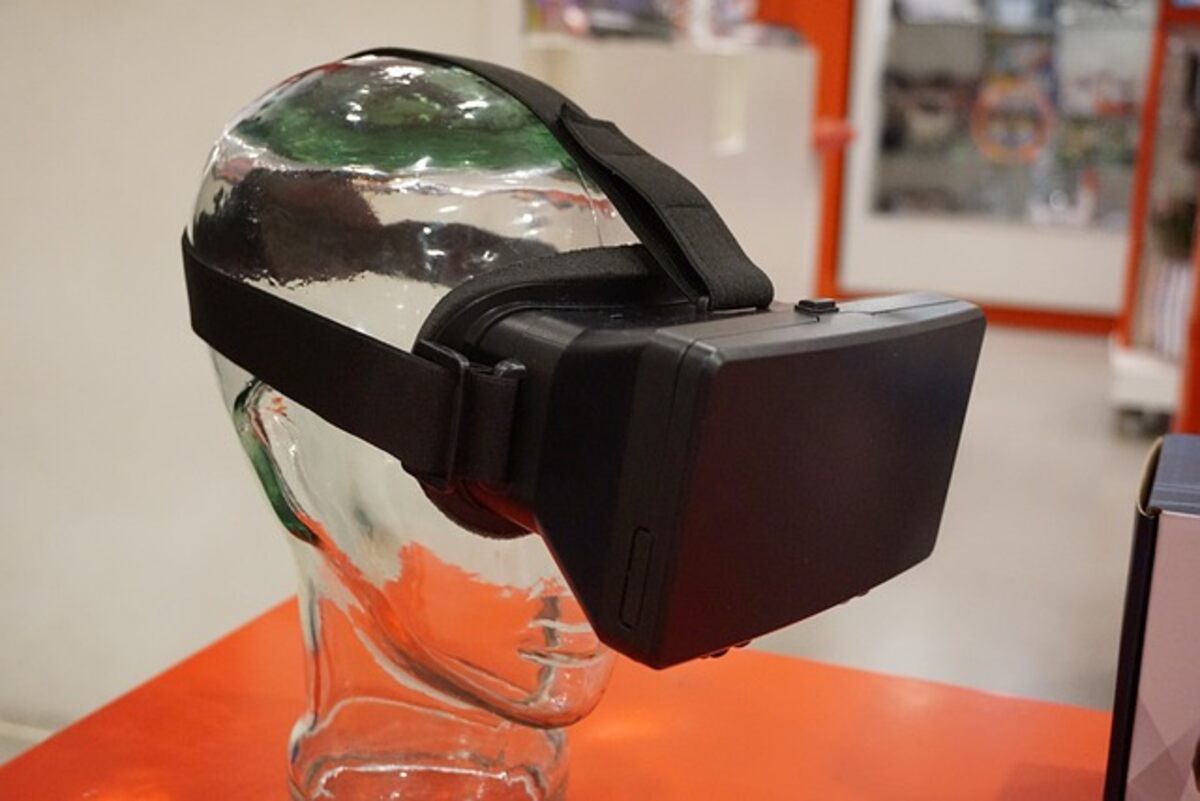Going through the Fascinating World of Virtual Truth Experiences


Virtual Reality (VR) has become a buzzword in recent years, supplying an exciting glimpse into the future involving digital interaction. From new gaming to virtual excursions, VR experiences are altering how we engage with technology. But you may be asking yourself what VR is precisely and whether it is shaping our world. On this page, we’ll delve into the exciting world of VR, exploring its various applications, benefits, plus the future potential it contains. Learn the best info about Virtual Reality Experiences.
What is Virtual Reality?
Concept of VR
Virtual Reality is a technology that creates a virtual environment, allowing users to immerse themselves in a digital world. Unlike traditional consumer interfaces, VR places the consumer inside an experience, enabling interaction with 3D worlds. This is achieved through devices such as VR headsets, which offer a 360-degree view, and hand controllers, which allow interaction with virtual objects.
Exactly How VR Works
VR techniques work by using a combination of equipment and software to generate realistic visuals and sounds. The VR headset displays the 3D world in real-time as the user moves, creating a sense of existence. Sensors in the headset monitor the user’s movements, and haptic feedback devices could also be used to simulate touch, adding another layer of concentration.
A Brief History of VR
While VR seems like a modern development, its roots go back a number of decades. The concept of virtual Reality was first explored in the 1960s, along with early prototypes like the “Sensorama. “However, it was not until the 1990s that VR began to gain traction, and the development of devices like the Ouverture Rift in the early 2010s also brought VR into the mainstream.
Types of Virtual Reality Encounters
Immersive VR
Immersive VR is the most advanced type of digital Reality, offering a fully covered experience. Users wear VR headsets that prevent the physical world from being out, changing it with a virtual 1. This type of VR is often employed in gaming, simulations, and teaching programs, where a high level of immersion is crucial.
Non-immersive VR
Non-immersive VR is less new than its entirely new counterpart. It typically consists of interacting with a virtual natural environment via a standard computer or maybe a console setup, where the virtual world does not surround the end user. Examples include airline flight simulators or educational courses where the experience is with a screen rather than enveloping an individual.
Semi-immersive VR
Semi-immersive VR offers a middle ground between immersive and non-immersive experiences. It involves large screens or projection systems that exhibit a virtual environment, which is frequently used in professional simulations, such as Training. While the expertise is more engaging than non-immersive VR, it doesn’t totally replace the user’s environment.
Well-liked VR Platforms
Oculus Rift
Oculus Rift is a master in the VR industry. It offers a comprehensive VR experience, along with advanced tracking and high-resolution displays. It’s popular among game enthusiasts and developers alike, providing a platform for a wide range of VR applications.
HTC Vive
The HTC Vive is known for room-scale VR, which allows consumers to physically move around a place and have their movements duplicated in the virtual world. This makes it ideal for games and ruses that require a high level of conversation.
PlayStation VR
PlayStation VR brings virtual Reality to console gaming, offering an inexpensive entry point into VR for PlayStation users. With an increasing library of games and experiences, PlayStation VR has become a popular choice for everyday gamers looking to explore online Reality.
The Impact of VR on Various Industries
VR in Gaming
VR has revolutionized the gaming marketplace, offering players an unheard-of level of immersion. Games including “Beat Saber” and “Half-Life: Alyx” have set entirely new standards for what’s likely in gaming, providing emotions that are not only visually beautiful but also deeply engaging.
VR in Education
In the educational sector, VR is familiar with creating interactive learning settings. Whether exploring historical civilizations or conducting internet science experiments, VR will allow students to engage with information in a way that traditional methods can’t match.
VR in Medical
Healthcare is another field where VR is making considerable strides. Surgeons can train complex procedures in an online environment, and patients can use VR for pain supervision or to overcome phobias. VR’s ability to simulate real-world cases makes it an invaluable tool in medical Training and remedy.
VR in Tourism
The particular tourism industry is also enjoying VR, offering virtual travel to destinations around the world. Many people explore the streets of Rome or the ancient ruins of Machu Picchu. VR permits people to experience places they could not otherwise be able to go to.
The Future of VR Experiences
Scientific Advancements
The future of VR will be bright, with continuous breakthroughs making the technology more accessible and also immersive. From haptic matches that simulate touch to be able to ultra-high-definition displays, the next generation of VR promises to be a lot more engaging.
VR in everyday routine
As VR technology becomes more widespread, it’s vulnerable to find its way directly into everyday life. Imagine attending any virtual meeting, shopping inside a virtual mall, or even participating in a virtual concert- all without leaving your home. The possibilities are usually endless.
Benefits of VR Activities
Enhanced Learning
One of VR’s most considerable benefits is its potential to enhance learning. By providing an immersive and fun environment, VR can make education and learning more engaging and successful, leading to better retention and understanding.
Immersive Entertainment
Regarding entertainment, VR offers an amount of immersion that’s hard to overcome. Whether you’re exploring a fresh world in a game or perhaps watching a 360-degree video, VR provides an experience that is far more engaging than standard media.
Improved Training and also Simulation
In professional options, VR is being used to exercise employees in a safe and controlled environment. From journey simulators to medical procedures, VR allows for hands-on practice but without the risks associated with real-world schooling.
Challenges and Limitations Connected with VR
Technical Challenges
Even with its many benefits, VR is not without its challenges. Complex issues like latency, movement sickness, and the high cost of devices can limit the supply and enjoyment of VR emotions. However, as technology consistently improves, these challenges will probably diminish.
Accessibility and Fee
High-quality VR systems are usually expensive, making them inaccessible to some users. Additionally, the need for a computer or console to run VR applications adds to the fee. However, as prices keep dropping, VR is becoming inexpensive.
Ethical Concerns
As with any new technology, VR raises ethical issues. Concerns about privacy, record security, and the potential for dependency are important issues that need to be attended to as VR becomes considerably more integrated into our lives.
How to Get Started Having a VR
Choosing the Right VR Accessory
If you’re new to VR, it is essential to choose the right gear. Consider factors like comfort, suitability, and the types of experiences you intend to explore. Popular options include the Oculus Quest 2 for standalone VR or the Xbox 360 VR for console end users.
Setting Up Your VR Process
Setting up a VR system may be daunting, but it’s somewhat straightforward with the proper guidance. Be sure to have enough space to move around, proceed with the setup instructions for your headphones, and take the time to calibrate the training course for the best experience.
Recommended VR Experiences for Beginners
For those who are new to VR, starting with beginner-friendly activities is a good idea. Games like “Beat Saber” and “Job Simulator” are easy to pick up and provide a fantastic introduction to VR.
Conclusion
Virtual Reality is not a passing trend; it’s a groundbreaking technology that’s transforming the way you interact with digital content. From gaming and education to healthcare and tourism, VR is opening up new options and redefining experiences. Since technology continues to advance, innovations in VR look incredibly promising, offering endless opportunities for innovation and exploration.
Frequently asked questions
What are the best VR headphones for beginners?
The Oculus Pursuit 2 is highly recommended for novices due to its ease of use, affordability, and also wide range of available content.
Can VR easily be used for fitness and also exercise?
Yes, VR will increasingly be used for fitness. Online games and apps like “Supernatural” and “Beat Saber” offer you engaging and fun approaches to stay active.
Is VR safe for children?
VR may be safe for children if applied appropriately. It’s essential to follow the manufacturer’s age recommendations and reduce screen time to prevent concerns like eye strain and also motion sickness.
How much will a VR setup cost?
The expense of a VR setup may vary greatly, from around $300 for a basic system like the Oculus Quest 2 to $1000 for a high-end method with advanced features.
Can VR easily replace traditional games?
While VR offers a unique gaming experience, it’s less likely to replace traditional games completely. Instead, VR will likely coexist as an exciting alternative for anyone looking for more immersive activities.
Read also: Terp Slurper Banger.
Recent Posts
Exactly how Financial Planners Can Improve Savings
Hello there! Have you ever believed that you're doing every little thing right yet your…
Keeping Your Electric Nectar Collectors’ Effectively
In this article, we'll immerse into some super very simple ways to maintain your electric…
How you can Design a Commercial Green Roof structure
Hey there! 🌿 Ever contemplated turning that dull business-oriented rooftop into a lush eco-friendly oasis?…
The way to Maximize Chat GPT Free of charge Usage
Hey there! If you're interested in learning how to make the most out of Talk…
The way to select the Right Crypto Lender
Hi there, crypto enthusiasts! If you're delving into the world of crypto credit or considering…
Top rated Strategies for Boosting in WoW
Here you are at the ultimate guide on upping your experience in World of Warcraft…


